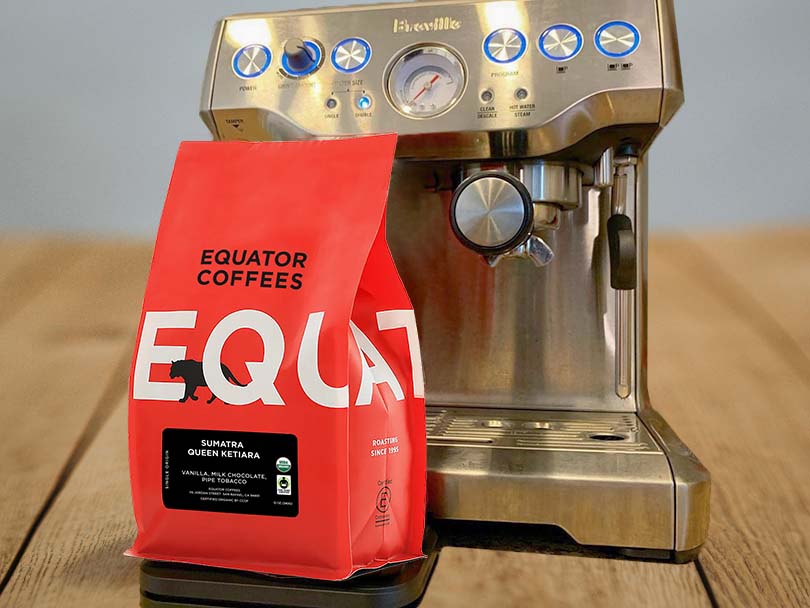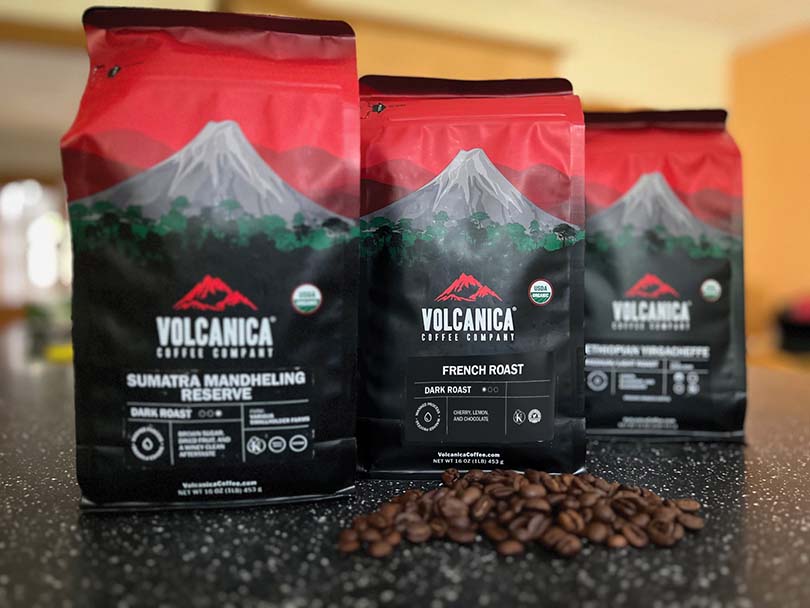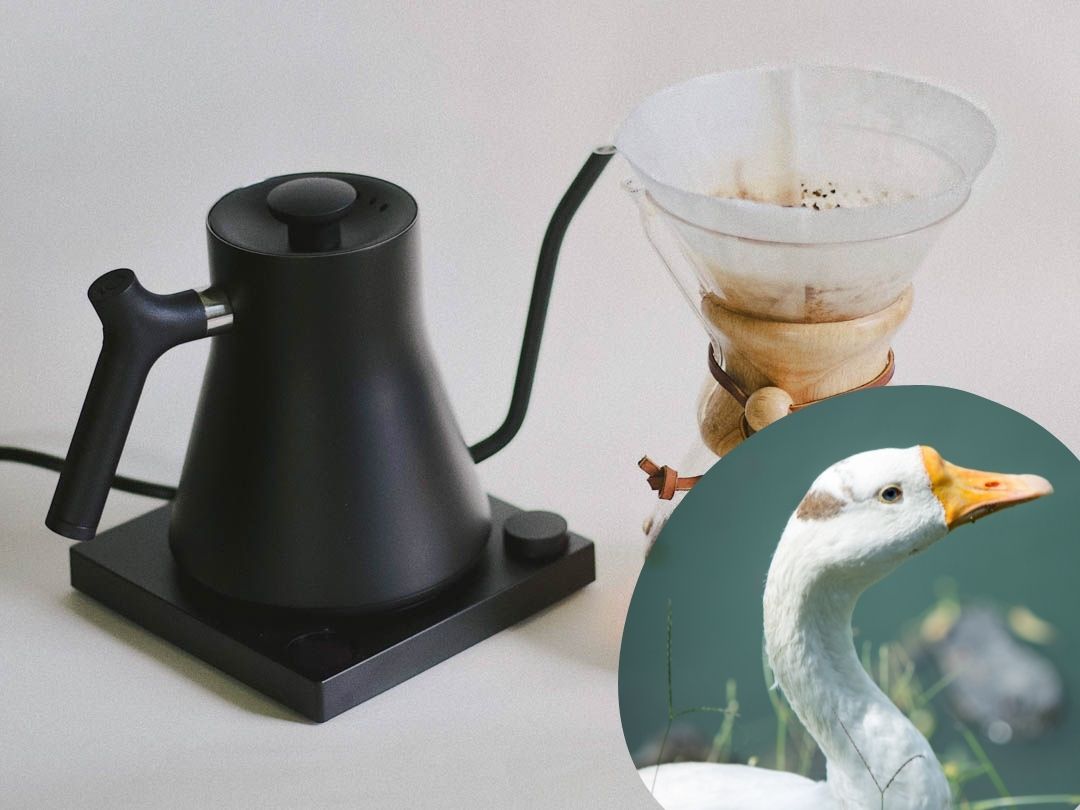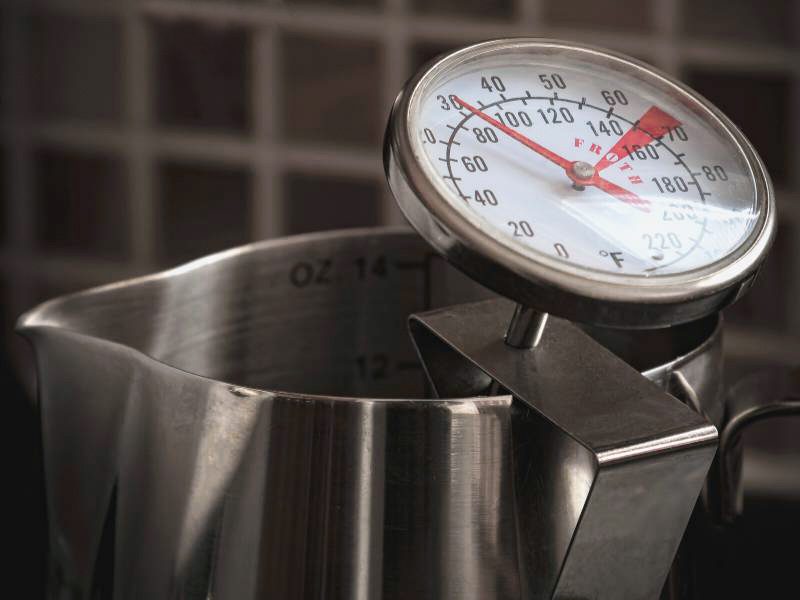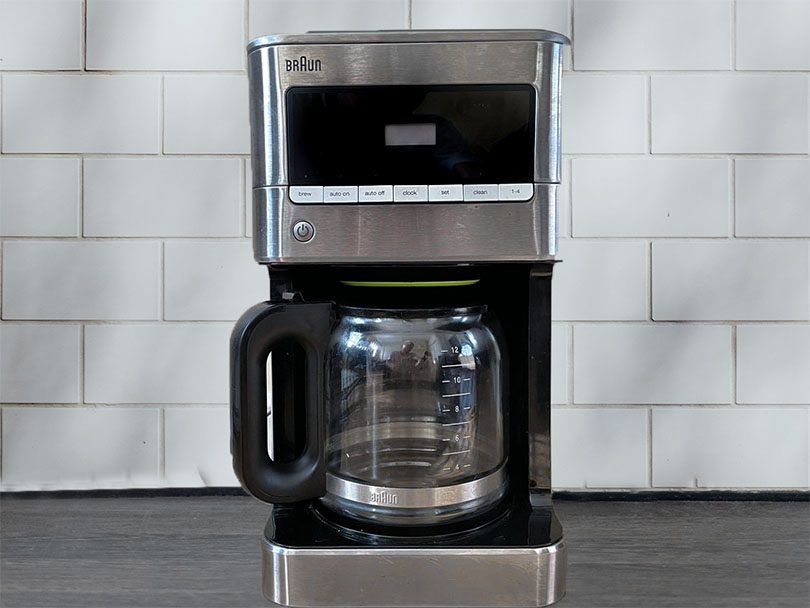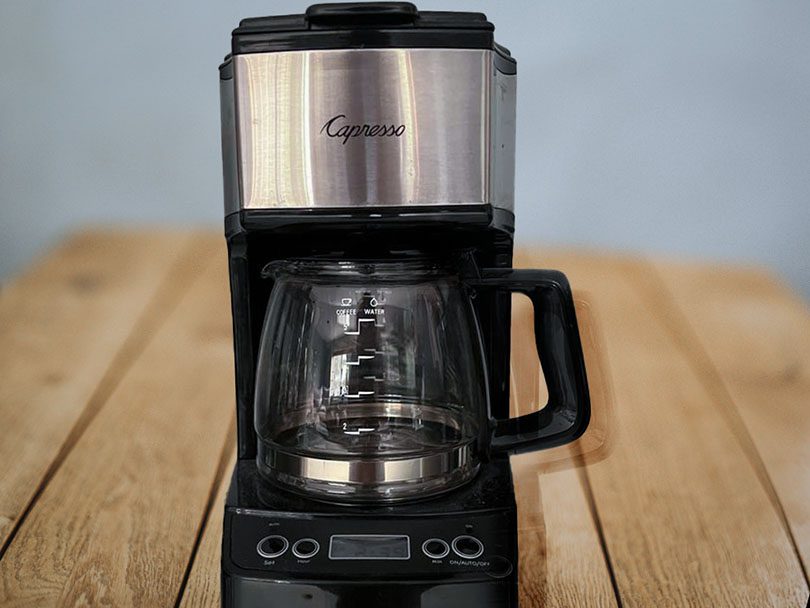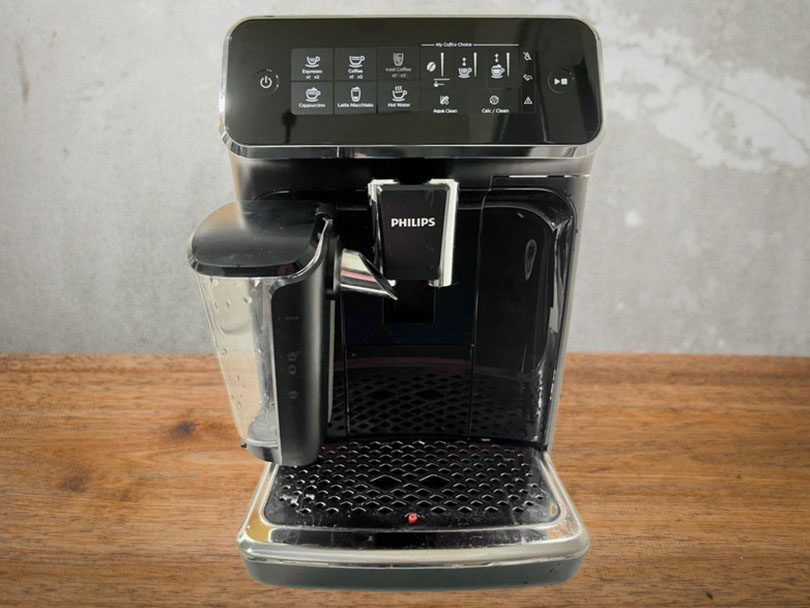The acrid, overly bitter taste of something burnt is rarely enjoyable. Getting a cup of hot liquid tasting of tar and ashes is the last thing you need. But unfortunately, it’s a common issue. Fear not for we have all the answers to why does my coffee taste burnt?
The simple answer is your coffee tastes burnt because it IS burnt. Burning coffee mainly happens in one of two places. Either while it’s being roasted (so avoid very shiny, dark beans). Or whilst it’s in your coffee maker if the water is too hot (so it shouldn’t be above 205°F).
Here we are going to take a deep dive into the exact causes and, more importantly, how to salvage your morning brew.
This article may contain affiliate/ compensated links. As an Amazon Associate, we earn from qualifying purchases at no additional cost to you. For more information please see our disclaimer here.
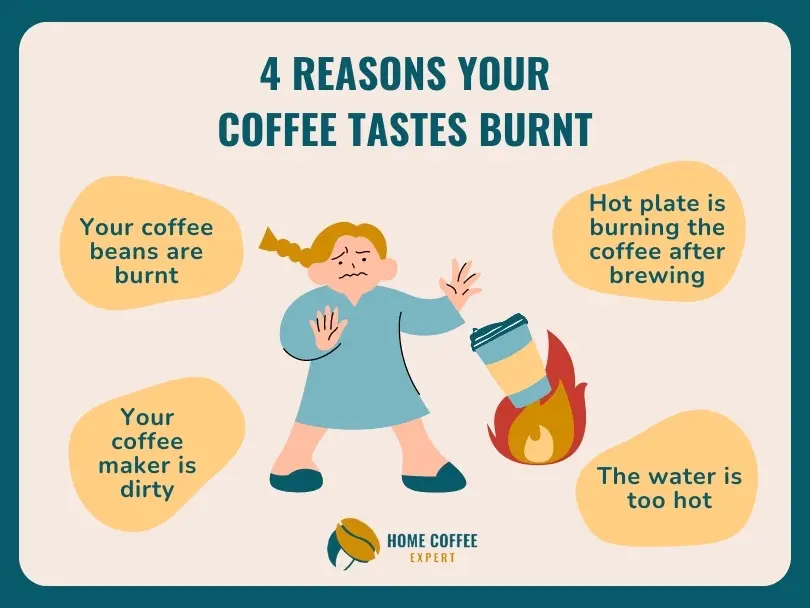
No matter how good your coffee-making skills are, if you use burnt coffee beans you will always produce a burnt-tasting cup of joe.
One mistake can (probably) be forgiven, but if your coffee beans are burnt twice from the same roaster. It’s time to look elsewhere.
To make sure this doesn’t happen you need to be able to spot burnt beans and avoid them like the plague. Luckily, they’re easy to spot:
Spot the Difference
If your new coffee beans look incredibly shiny (like oiled-up bodybuilder level of shiny), then there’s a good chance they’re at least a little burnt. As beans are roasted, the essential oils move closer to the surface. So, if they’re roasted for too long, the oils are all on the surface giving an overly shiny bean.
Smell the Difference
We’ve all left a pan on the stove for too long or put the toaster on too high a setting. So we know what burning smells like.
Your coffee beans, even dark roasted ones, shouldn’t smell like this. Yes, there can be a hint of smoke. But it should be a delicate aroma – if they smell like a recently put-out fire, they’re burnt.
Brew the Difference
This one is specifically for those making espresso at home. Burnt coffee beans create a very specific set of issues while pulling an espresso shot. Aside from the taste, there are a few signs you can look for:
Coffee Dripping Rather Than Flowing
Keep an eye on the rate of brewed coffee coming out of the portafilter. If you only get drips, your coffee beans are probably burnt.
You should get a 1oz shot of espresso in 20-30 seconds. If you’re running your espresso machine for 45 seconds and only getting a slow drip that whole time, then your beans have possibly been over-roasted.
Very Black Color
Black coffee isn’t black. It’s a very dark brown color that looks black in a cup or mug. But, if your espresso genuinely looks black or, at least, incredibly dark in a glass then your beans are probably burnt.
Wet Puck
After brewing your espresso, check the puck. If the puck is very wet and sloppy, you have oversaturated coffee grounds on your hands. Burnt coffee beans can’t absorb as much water during brewing as correctly roasted ones which leads to a very wet coffee puck.
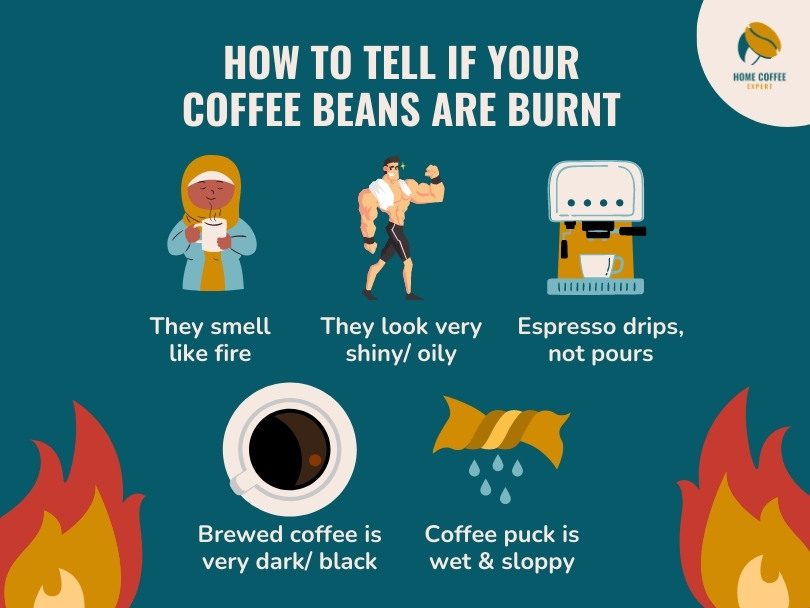
You can have perfectly roasted beans but then burn them during the brewing process.
Coffee should never be made with water that is above 205°F (95°C). Using boiling water will burn the coffee grounds and result in unpleasant-tasting burnt coffee. But it’s a careful balancing act as, if you go too cold, it can be one of the main causes of sour-tasting coffee and watery coffee. So nailing that water temperature is a big deal.
Ideally, you should aim for somewhere around 200°F (93°C).
There are a couple of ways you can do this:
- Use a temperature-controlled kettle (it’s one of the reasons we love using a quality gooseneck kettle)
- Leave your kettle for a couple of minutes after boiling to reduce naturally the temperature
- Reduce the temperature setting on your coffee machine (if it has one) to avoid burning the precious ground coffee
If you’re not sure what temperature your coffee maker is brewing your coffee with, use a meat/ milk thermometer to check the temperature of the water coming out of the machine.
Our Recommended Kit for Temperature Control
The drip coffee maker is the cornerstone of many households across the US. It’s a classic way of enjoying coffee over the course of a few hours.
But, those handy hot plates that keep your coffee hot aren’t always doing the best for your perfectly brewed pot of drip coffee. Many manufacturers aren’t very careful about the temperature of the hot plates and can quickly burn your coffee.
There are two solutions to this problem:
- OK, so this is the more expensive option. But buy a better drip coffee maker. (Click through to our recommended 4 cup drip coffee makers and the 5 cup ones if you need some inspiration).
- This one’s a little less costly: invest in a good quality thermos. Once you have a full pot of freshly brewed coffee, decant it into your thermos. It will do the same job of keeping it warm but without risking burning your coffee.
Our Recommended Gear
Espresso machine, drip coffee maker, or French press. It doesn’t matter what your chosen type of coffee maker is, you need to keep it clean in order to keep your coffee tasting great.
If you don’t keep on top of cleanliness then old coffee grounds could be stuck in the brewing mechanism. Constantly heating these grounds will lead to burnt flavors entering your otherwise perfect coffee.
Plus, a dirty coffee maker won’t last nearly as long as a well-maintained one. So always, always, always keep your machine clean for the best-tasting results.
PSA: Not all dark roasted coffee is burnt. But all burnt coffee is dark roasted.
A good dark roast coffee will give a rich flavor of chocolate and nuts with a hint of smoke. But if this dark roast strays a little too far, it will be less chocolate and more smoke, with the resulting coffee tasting acrid and burnt.
Stale coffee beans can also start to take on a much more burnt flavor. Over time, the flavor oils that give the beans their sweet notes to counter the bitter ones evaporate so the beans start to taste more burnt.
If your Keurig coffee tastes burnt it is most likely caused by a build-up of oils inside your coffee maker.
If you don’t keep on top of regularly cleaning your Keurig coffee machine, residue from previous coffees can build up. This will lead to bitter and burnt flavors making their way into every coffee you make.
To fix this problem you need to clean your Keurig coffee maker thoroughly and frequently. Using a vinegar solution to flush the system of any nasty build-ups is ideal. Just remember to run a lot of water through it afterward to avoid swapping burnt coffee for vinegary-tasting coffee.
After cleaning, your coffee should return to its normal, delicious flavor.
Sometimes having to swallow down burnt, bitter coffee is unavoidable. Maybe you’re visiting relatives and don’t want to be rude. Or maybe you’re in such dire need of caffeine that the nearest service station will do. So, what are your options?
Short of binning it or swallowing it down in one go, the only option is to mask the flavor. Sugar is always a good option to counter the acrid smoky flavor with a touch of sweetness. Adding milk can also make it feel less aggressive on your stomach.
Of all the flavor-based issues you can have with coffee, why does my coffee taste burnt, is probably the easiest to fix.
The problem always occurs in the same way (through burning), it can just happen at different stages in the process. This makes it pretty easy to identify where the problem is coming from.
Some people enjoy the smoky, bitter taste of over-roasted coffee beans. But for the rest of us, follow these quick fixes for burnt tasting coffee.
You Might Also Like
-
Philips 3200 LatteGo Review: Is Simplicity the Best Coffee?
Built to be easy to use and clean. For an easy life, read our Philips 3200 LatteGo review to see if this is the espresso machine for you
-
What is Protein Coffee AKA Proffee?
Health Hack or Another Fad?We are fully in the “Protein Era” and nothing is safe. But what is protein coffee? Do we care? Should we care? Read all about Proffee here
